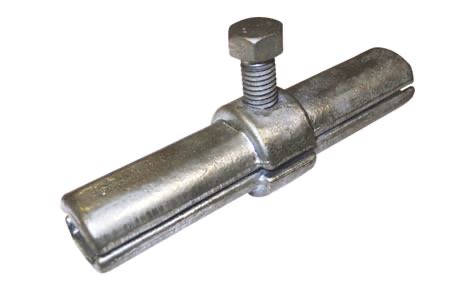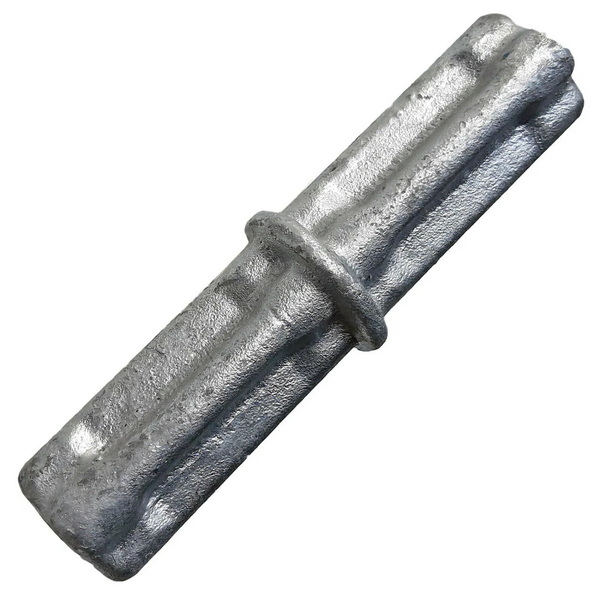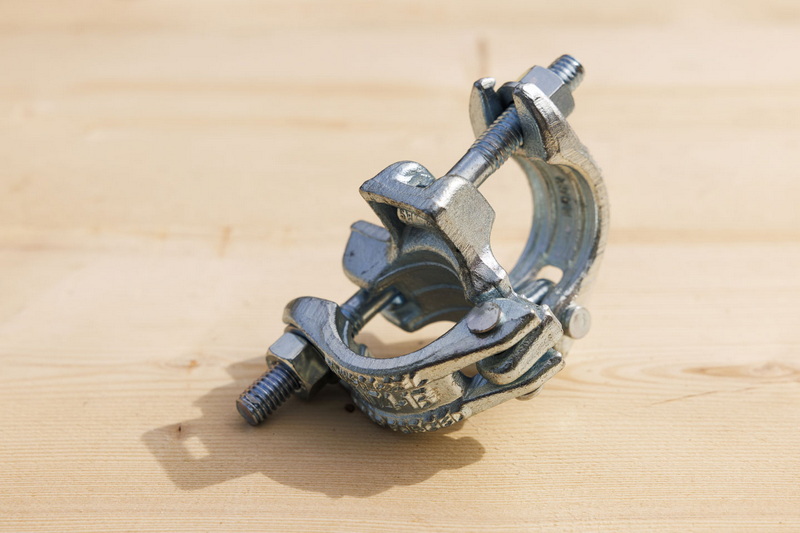Content Menu
● What Are Drop Forged Scaffolding Couplers?
>> Manufacturing Process
>> Features of Drop Forged Couplers
● Can Drop Forged Couplers Be Reused?
>> Reusability Overview
>> Conditions for Safe Reuse
>> Maintenance Practices Enhancing Reusability
● Benefits of Reusing Drop Forged Couplers
● Risks and Precautions in Reusing Couplers
● Industry Standards and Compliance
● Comparison: Drop Forged Couplers vs. Pressed Couplers
● Best Practices for Managing Drop Forged Couplers on Site
● Extended Insights on Coupler Longevity and Reuse
>> Effects of Repeated Use
>> Non-Destructive Testing (NDT)
>> Environmental Impact of Reuse
● Conclusion
● FAQ
>> 1. Can drop forged scaffolding couplers be reused safely?
>> 2. How often should drop forged couplers be inspected?
>> 3. What maintenance is required to extend the life of drop forged couplers?
>> 4. How do drop forged couplers compare to pressed couplers in terms of reusability?
>> 5. What standards govern the use and testing of drop forged scaffolding couplers?
Drop forged scaffolding couplers are essential components in tube and coupler scaffolding systems, widely used in construction projects for their strength, durability, and reliability. A common question in the industry is whether these drop forged scaffolding couplers can be reused safely and effectively across multiple projects. This comprehensive article explores the reusability of drop forged couplers, their manufacturing process, maintenance requirements, safety considerations, and best practices.

What Are Drop Forged Scaffolding Couplers?
Drop forged couplers are mechanical fittings used to join two scaffold tubes securely, typically at right angles (double couplers) or variable angles (swivel couplers). They are manufactured through a high-pressure forging process that shapes steel into extremely strong and durable components.
Manufacturing Process
- Material Selection: High-quality carbon steel or mild steel is chosen for strength.
- Heating: Steel is heated to a malleable state.
- Forging: The heated steel is hammered or pressed into dies under extreme pressure, aligning the grain structure to enhance mechanical properties.
- Cooling: Rapid cooling increases toughness and durability.
- Finishing: Couplers are cleaned, trimmed, and coated—usually hot-dip galvanized or zinc plated—to resist corrosion.
Features of Drop Forged Couplers
- Superior strength and load-bearing capacity compared to pressed or cast couplers.
- High resistance to bending, distortion, and wear.
- Precision manufacturing ensures consistent dimensions and fit.
- Corrosion-resistant coatings enhance longevity.
- Suitable for heavy-duty and high-rise scaffolding applications.
Can Drop Forged Couplers Be Reused?
Reusability Overview
Yes, drop forged scaffolding couplers can be reused multiple times in construction projects, provided they are properly maintained, inspected, and free from damage. Their robust manufacturing and durable coatings make them ideal for repeated use, which offers significant cost savings and sustainability benefits.
Conditions for Safe Reuse
- No Visible Damage: Couplers must be free from cracks, bends, corrosion, or deformation.
- Functional Locking Mechanisms: Bolts and nuts must operate smoothly and tighten securely.
- Corrosion-Free Surface: Protective coatings should be intact to prevent rust weakening.
- Compliance with Safety Standards: Couplers must continue to meet standards such as EN 74, BS 1139, and OSHA.
- Regular Inspection: Couplers should be inspected before and after each use by qualified personnel.
Maintenance Practices Enhancing Reusability
- Cleaning: Remove dirt, debris, and rust regularly.
- Lubrication: Apply light lubricants to threads and moving parts.
- Storage: Store couplers in dry, covered areas with good drainage.
- Repair: Minor damage can sometimes be repaired; severely damaged couplers must be discarded.
- Inventory Management: Track coupler usage and condition to ensure timely replacement.
Benefits of Reusing Drop Forged Couplers
- Cost Efficiency: Reduces the need for purchasing new couplers for every project.
- Environmental Sustainability: Minimizes waste and resource consumption.
- Reliability: Maintains high safety standards when properly inspected.
- Operational Efficiency: Familiarity with equipment reduces setup time.

Risks and Precautions in Reusing Couplers
- Undetected Damage: Hidden cracks or corrosion can cause failure.
- Wear and Tear: Repeated tightening and loosening may weaken threads or bolts.
- Improper Storage: Exposure to moisture accelerates corrosion.
- Non-Compliance: Using damaged or substandard couplers violates safety regulations.
Precautions:
- Conduct thorough inspections using visual and, if possible, non-destructive testing.
- Replace couplers showing any signs of compromise.
- Follow manufacturer guidelines and industry standards strictly.
- Train personnel in proper handling, inspection, and maintenance.
Industry Standards and Compliance
Drop forged couplers must comply with standards such as:
- EN 74: European standard specifying performance and testing of scaffolding couplers.
- BS 1139: British standard covering scaffolding tubes and fittings.
- IS 2750 & IS 3696: Indian standards for scaffolding couplers and safety.
- OSHA: U.S. occupational safety regulations for scaffolding.
Compliance ensures that reused couplers maintain their load-bearing capacity and safety integrity.
Comparison: Drop Forged Couplers vs. Pressed Couplers
| Feature | Drop Forged Couplers | Pressed Couplers |
| Manufacturing Process | High-pressure forging | Pressed steel plates |
| Strength and Durability | Superior | Moderate |
| Load Capacity | Higher (suitable for heavy-duty) | Lower (light to medium-duty) |
| Weight | Heavier | Lighter |
| Cost | Higher upfront cost | Lower upfront cost |
| Reusability | High, with proper maintenance | Moderate |
| Corrosion Resistance | Hot-dip galvanized or zinc plated | Often zinc plated |
Best Practices for Managing Drop Forged Couplers on Site
- Establish a regular inspection schedule before and after each use.
- Use torque wrenches to tighten couplers to manufacturer specifications (typically 54 Nm).
- Implement a tracking system for coupler condition and usage history.
- Educate workers on proper handling and storage to avoid damage.
- Replace couplers immediately if any damage or corrosion is detected.
Extended Insights on Coupler Longevity and Reuse
Effects of Repeated Use
Repeated assembly and disassembly can cause wear on threads and moving parts. However, drop forged couplers are designed for durability, and with proper maintenance, they can withstand many cycles of use without compromising safety.
Non-Destructive Testing (NDT)
Advanced inspection techniques such as ultrasonic testing or magnetic particle inspection can detect internal flaws not visible to the naked eye, ensuring couplers remain safe for reuse.
Environmental Impact of Reuse
Reusing drop forged scaffolding couplers reduces the environmental footprint by minimizing steel waste and lowering the demand for new manufacturing, contributing to sustainable construction practices.
Conclusion
Drop forged scaffolding couplers are highly durable and designed for reuse in construction projects, provided they are well-maintained and regularly inspected. Their superior strength and corrosion resistance make them ideal for heavy-duty scaffolding applications. Reusing these couplers not only offers cost savings but also supports sustainable construction practices. However, safety must always be the priority; damaged or compromised couplers should never be reused. By adhering to industry standards and best maintenance practices, construction professionals can confidently reuse drop forged couplers to build safe and reliable scaffolding structures.

FAQ
1. Can drop forged scaffolding couplers be reused safely?
Yes, drop forged couplers can be safely reused if they are free from damage, properly maintained, and inspected regularly according to safety standards.
2. How often should drop forged couplers be inspected?
Couplers should be inspected before every use and periodically during long-term projects to ensure no damage or corrosion has occurred.
3. What maintenance is required to extend the life of drop forged couplers?
Regular cleaning, lubrication of moving parts, proper storage in dry conditions, and timely replacement of damaged components are essential.
4. How do drop forged couplers compare to pressed couplers in terms of reusability?
Drop forged couplers are generally more durable and have a higher reusability rate due to their superior strength and manufacturing process.
5. What standards govern the use and testing of drop forged scaffolding couplers?
Standards such as EN 74, BS 1139, IS 2750, IS 3696, and OSHA regulate the manufacturing, testing, and safe use of scaffolding couplers.






















